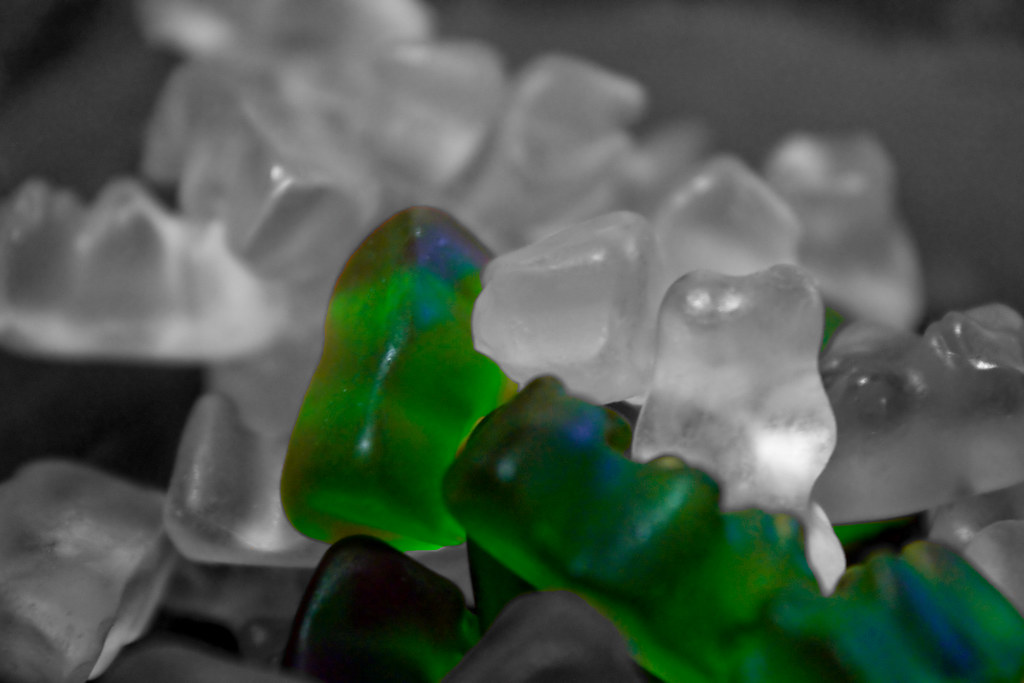Today, we’re delving into the world of gummy bears and examining one strange component called sorbitol. Ever pondered the reason behind the distinctive texture and gratifyingly lengthy shelf life of these chewy delights? Look nowhere else! Join us as we reveal the reasons why the sugar substitute sorbitol is essential to the production of those adored gummy bears.
Gummy bears include sorbitol for a number of purposes. In order to give the gummy bears their distinctive sweetness and moist feel, it first and foremost functions as a sweetener and humectant.
The chewiness and elasticity of the gummy bears are also significantly improved by sorbitol, giving them a satisfyingly flexible bite. In addition, sorbitol has fewer calories than ordinary sugar, making it a popular option for people looking for low-calorie or sugar-free alternatives.
In addition, sorbitol has the benefit of not crystallising, keeping the gummy bears’ shape and preventing them from hardening or becoming gritty over time. Because of its unique combination of qualities, sorbitol is a crucial component in the production of our favourite gummy bears, offering both flavour and texture that entice us to consume more.

Can gummy bears be made without sorbitol?
You can make gummy bears without sorbitol. Although sorbitol is frequently used in the manufacture of gummy bears, it is not a necessary ingredient. To attain the proper texture and sweetness, there are numerous recipes and formulas that either omit sorbitol or employ substitute components.
Traditional gummy bear recipes use a lot of gelatine, which is made from animal collagen. It gives the sweets their distinctive chewiness and structure. To give gummy bears the proper flavour, texture, and appearance, additional ingredients including sweeteners (sugar, alternative sweeteners), flavourings, acidulants (like citric acid), and colourants are also employed.
It’s crucial to be aware that changing the amount of sorbitol may change how sweet and chewy the gummy bears are. The final outcome will depend on the alternative ingredients used and their ratios. Finding the ideal mixture for manufacturing gummy bears without sorbitol while still getting the desired attributes may involve recipe modifications and experimenting.
If you want to produce gummy bears without sorbitol, look into recipes that utilise different sweeteners or sugar replacements. To get the best results, follow the directions and the recommended ratios.

Are there any alternatives to sorbitol for achieving the desired texture and sweetness in gummy bears?
Yes, there are sorbitol substitutes that can be used to give gummy bears the proper sweetness and texture. Typical substitutes include:
- Maltitol: Another sugar alcohol that can be used in place of sorbitol when making gummy bears is maltitol. It adds sweetness and possesses humectant qualities similar to sugar, which helps the sweets’ chewiness and moisture retention.
- A sugar alcohol generated from plants, xylitol. It is frequently used in sweets like gummy bears as a sugar alternative. In addition to providing sweetness, xylitol aids in preserving the desired texture of the gummy bears.
- Erythritol: A sugar alcohol that naturally exists in various fruits is called erythritol. Its sweetness profile is comparable to that of sugar, however it contains fewer calories. Gummy bears can be made with erythritol instead of sugar to provide the desired sweetness and texture.
- Stevia is a natural sweetener made from the Stevia rebaudiana plant’s leaves. Since it is much sweeter than sugar, few amounts are required. Stevia can be combined with other ingredients to make gummy bears as sweet as needed while using less sugar.
Agave nectar: A natural sweetener frequently used as an alternative to sugar, agave nectar is derived from the agave plant. It can be used to add sweetness and help create the desired texture in gummy bear recipes.
The qualities of each alternative sweetener, such as sweetness level, taste, and effect on texture, may differ slightly from one another. Therefore, when replacing sorbitol with these alternatives in the production of gummy bears, recipe modifications and testing may be required to attain the desired results.

Can sorbitol be used as a substitute for sugar in other types of candies or desserts?
In a variety of candies and pastries, sorbitol can take the place of sugar. Sorbitol is frequently used as a sugar substitute in the creation of sugar-free or low-sugar confections due to its sweetening characteristics and comparable flavour profile to sugar.
Sorbitol can also be found in sugar-free candies, chocolates, chewing gum, and other sweets in addition to gummy bears. Additionally, it is utilised in the preparation of baked goods with less or no sugar, including cookies, cakes, and pastries.
It’s important to remember that substituting sorbitol for sugar may necessitate modifying recipe formulations because it can differ from sugar in terms of sweetness and sensory qualities. Moderation is crucial because too much sorbitol consumption may have a laxative impact for certain people.
Does the use of sorbitol affect the color or appearance of gummy bears?
Gummy bears’ colour and look are typically not greatly changed by the use of sorbitol in these confections. A sugar alcohol known as sorbitol is often sold as a white, crystalline powder. Sorbitol combines with other ingredients in the gummy bear recipe to produce a transparent or translucent gummy texture.
Since sorbitol has no colour, the gummy bears’ colour is unaffected by its addition. Gummy bears’ characteristically vivid colours are produced by adding food colouring or natural colourants during the manufacturing process. These colourants can be used without sorbitol.
It’s important to remember that additional elements, such as the choice of colourants, the production process, and the presence of additional ingredients like fruit juice or flavourings, might affect how gummy bears look overall. However, the colour and appearance of gummy bears are not significantly influenced by sorbitol by itself.
Relevant Articles
Can You Toast Marshmallows Over A Candle?
What Is The Difference Between Gluten And Glucose?

Comments are closed